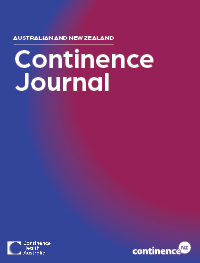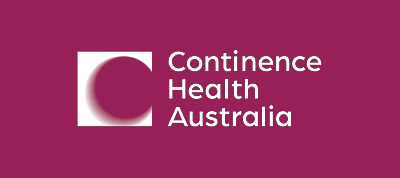
Australian and New Zealand Continence Journal
Volume 31 Number 2 2025
CJ25201Grading of obstetric anal sphincter injury: endoanal or transperineal ultrasound?
Childbirth injuries to the anal sphincter muscles affect up to 5% of women and can lead to devastating bowel control problems that severely impact quality of life. This study compared two ultrasound techniques for detecting these injuries after surgical repair, finding that the transperineal method (placing the probe externally on the skin) gave similar results to the gold-standard but more invasive endoanal ultrasound (requiring probe insertion). These findings suggest the less invasive external ultrasound could become a practical alternative.
CJ25201 Abstract | CJ25201 Full Text | CJ25201PDF (178 KB) Open Access Article
CJ25200Aboriginal and Torres Strait Islander women’s experiences of living with urinary incontinence
The leakage of urine, or urinary incontinence, is a common health condition experienced by more women than men. This research aimed to describe Aboriginal and Torres Strait Islander women’s experiences of living with urine incontinence. The research found that incontinence had many negative effects on the quality of daily living. Some areas of improvement in delivery of health services identified by women included assisting women seek help without feeling embarrassed and raising community awareness about prevention and treatments for incontinence.
CJ25200 Abstract | CJ25200 Full Text | CJ25200PDF (307 KB) Open Access Article
CJ24046Physiotherapy pessary providers in Australia: results of a multidisciplinary survey of practice
Prolapse is a common and distressing problem for women, but it can be managed with a pessary to provide internal support to the vaginal walls, a service historically provided by doctors. This study reports on over 300 women’s health physiotherapists, with variable training, providing pessaries and teaching women self-care in all regions across Australia. These findings have implications for physiotherapy pessary training to meet competency standards, so that women have access to best-practice, non-surgical prolapse care regardless of their location.
CJ24046 Abstract | CJ24046 Full Text | CJ24046PDF (416 KB) | CJ24046Supplementary Material (304 KB) Open Access Article
Constipation is not just uncomfortable, it can kill. Most children who are constipated just need to eat well and have a good bowel ‘habit’, but a small number require surgery to remove a dilated rectum. By accepting that not all constipated children are the same, all will get the right treatment.
CJ24045 Abstract | CJ24045 Full Text | CJ24045PDF (232 KB) Open Access Article




